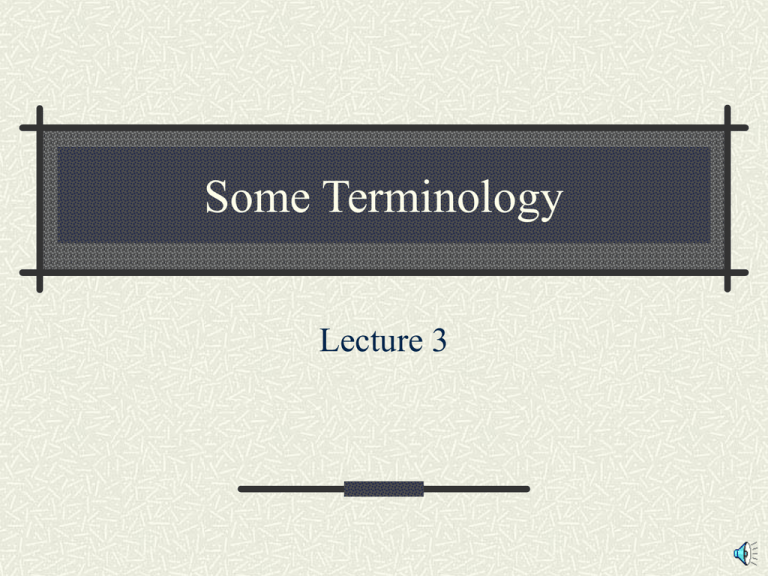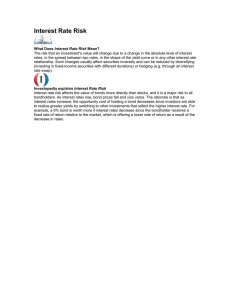Some Terminology Lecture 3
advertisement

Some Terminology Lecture 3 Terms to Be Defined Bond cash flows and present value Options and interest rate options (caps/floors) Callable bond Path dependent or path independent options Credit risk “On-the-run” securities Bond terminology Bonds typically pay periodic interest payments called “coupons” Annual coupon income is coupon rate times face value For simplicity, we will almost always use annual coupons In practice, bond coupons are usually paid in semiannual installments An example of a bond A $100 face value bond has an annual coupon of 8%. It expires in exactly 3 years. What do the cash flows look like? 0 1 $8 2 $8 3 $8+$100 Present Value Value of a bond (or any series of cash flows) is determined by discounting the cash flows by the appropriate interest rate Key issue is determining the appropriate interest rate (See lecture 4) Options Options provide the owner the right, but not the obligation, to buy or sell an asset at a fixed price Call option is right to buy Put option is right to sell The fixed price is called the exercise price Options have an expiration or maturity date Example of a call option Today is April 1, Allison has the right to buy MSFT at $70 per share from Bob on December 31 Bob is obligated to sell MSFT to Allison at $70 if she decides to “exercise” the option Allison wants price to go up Allison must pay Bob a “premium” to own this call option Callable Bonds Look like other bonds Schedule of specific coupons and principal Give the issuer the discretion to retire the debt early, prior to the scheduled maturity Useful when interest rates decline Reissue a new bond with lower interest expense Investor may need to reinvest proceeds at the current (lower) interest rate Interest Rate Caps Analogous to a call option on the interest rate Provides a payoff to the buyer if a reference interest rate rises above the cap level (or strike rate) Useful for a borrower concerned about rising interest rates Cap payments are related to some “notional principal” Some Details of a Cap Unlike a call or put option, a cap has multiple potential payoffs determined by a settlement frequency and a maturity At each settlement date, if the underlying index is below the strike rate, no payments are exchanged If the underlying index exceeds the strike rate, the seller of the cap must pay: (Index Rate - Strike Rate) Notional Amount (Days in settlement period 360) Interest Rate Floors Analogous to a put on interest rates Provides a payoff to the buyer if the reference interest rate falls below the floor level Useful for an investor concerned about falling interest rates Path Dependent vs. Path Independent Options Valuation of interest rate caps only depends on level of reference interest rate at settlement Caps are path independent Sometimes a security’s value depends on the path of interest rates Mortgage prepayments are high the first time interest rates fall Credit Risk and Default In most cases, we will assume risk-free cash flows Discount rate is from US Treasuries Default risk is uncertainty in payments of interest or principal Increases the required return Present value is lower Credit spread is extra amount of interest charged above similar risk-free rate “On-the-run” Securities US Treasury has auctions for sale of new securities Most recently issued securities are most liquid Called on-the-run Try to use on-the-run securities as much as possible

